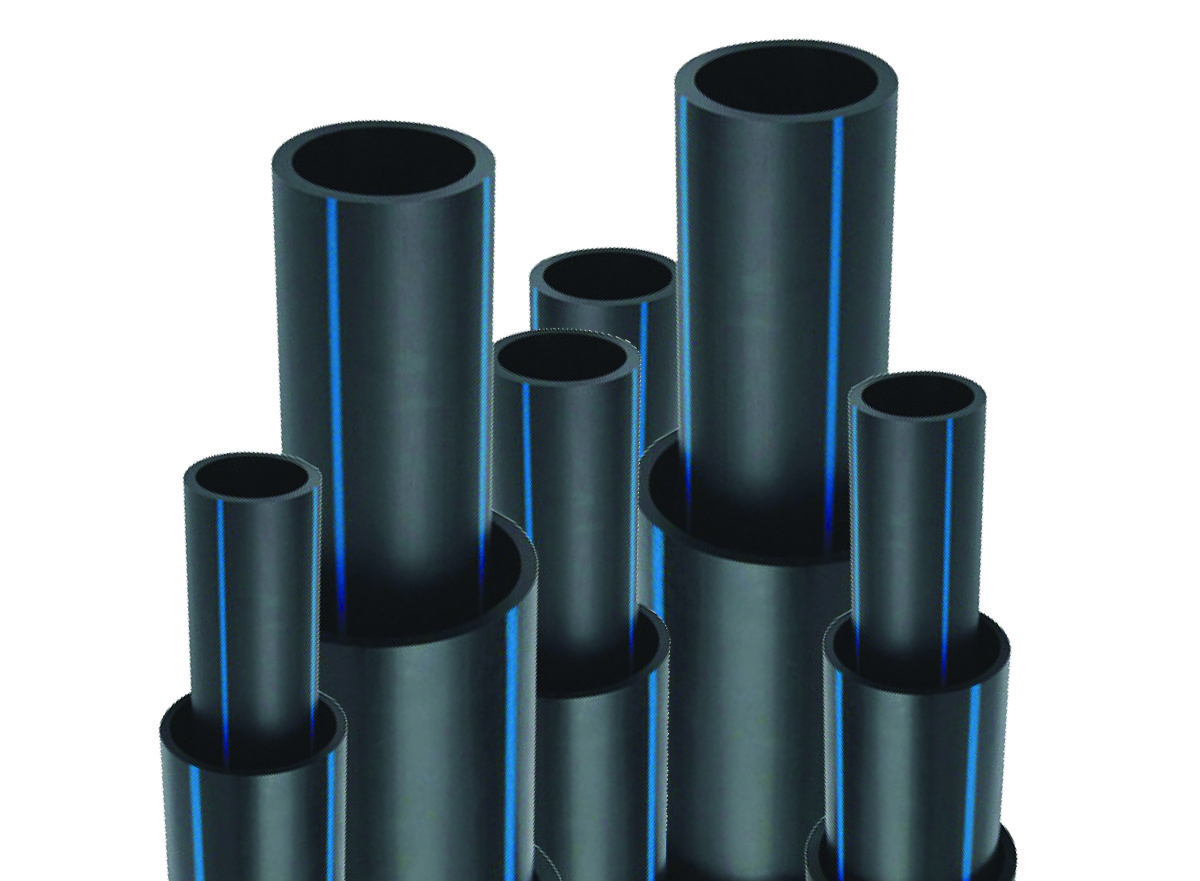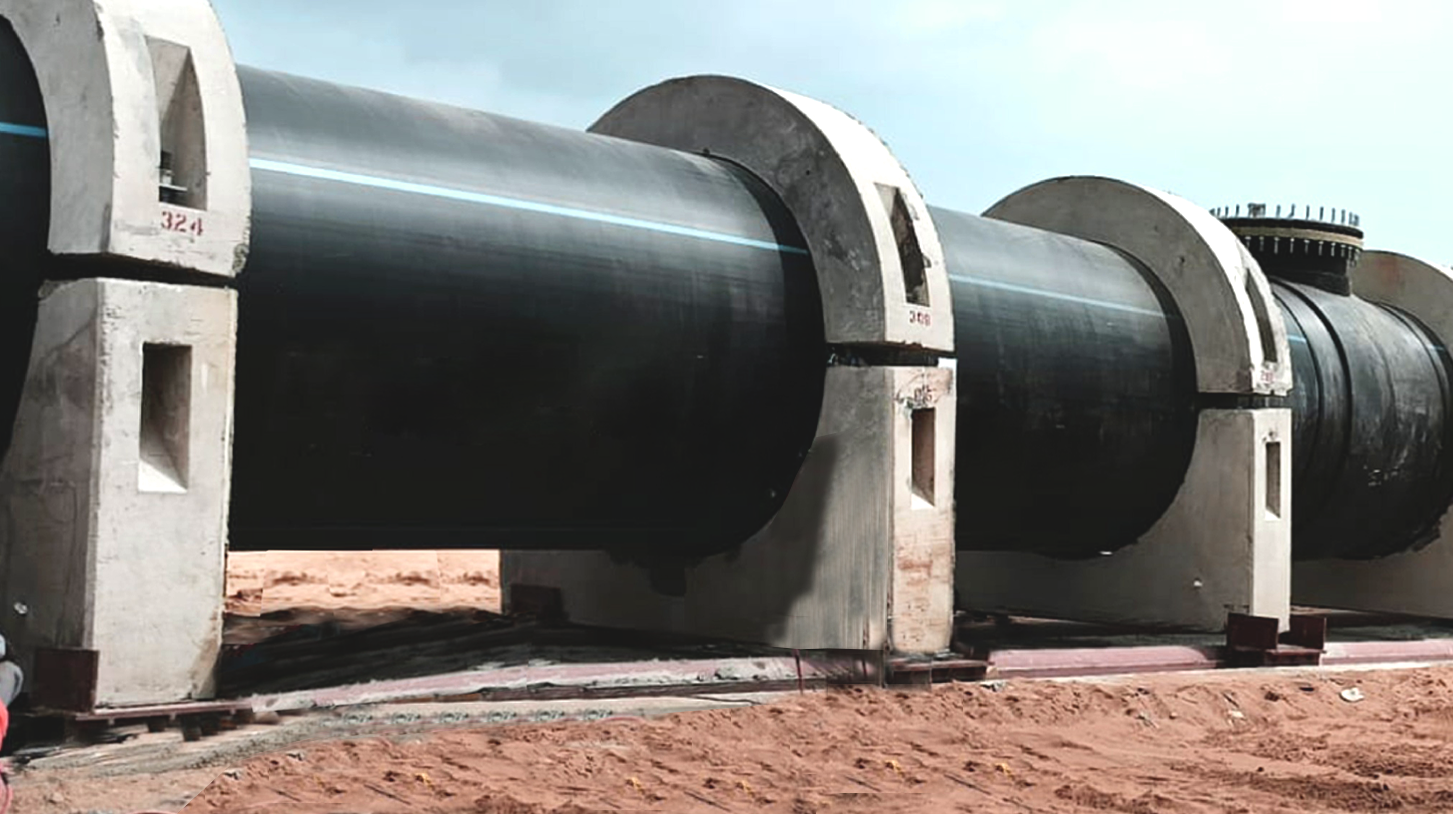The Necessary Actions for Successful Installment of HDPE Pipe in Your Following Project
Successful installment of HDPE pipe needs mindful planning and implementation. Secret steps include evaluating project requirements, preparing the site, and selecting appropriate signing up with methods. Each stage plays a vital role in guaranteeing the honesty and efficiency of the pipeline. Understanding these essential steps can greatly influence the total success of the project - American Plastics HDPE Pipe Manufacturing. The subtleties of each action might hold the trick to overcoming common challenges dealt with throughout installment.
Understanding the Benefits of HDPE Pipe
High-density polyethylene (HDPE) pipe offers various advantages that make it a favored option for different applications. Its high resistance to rust and chemicals assurances resilience popular environments, significantly prolonging the life-span of installments. In addition, HDPE's adaptability permits for easier installation, specifically in tough terrains, as it can bend without damaging. The light-weight nature of HDPE pipeline simplifies transportation and handling, lowering labor costs during installment.
In addition, HDPE pipeline is understood for its low friction coefficient, which enhances liquid circulation and minimizes energy consumption. Its seamless building minimizes the threat of leakages, adding to better resource administration and environmental management. Furthermore, HDPE is recyclable, aligning with lasting practices and decreasing ecological effect. Overall, the mix of stamina, flexibility, and eco-friendliness makes HDPE pipeline a remarkable choice for a wide variety of projects, from water circulation to commercial applications.
Planning Your HDPE Pipeline Installation
When intending a setup of HDPE pipeline, careful factor to consider of numerous essential variables is important to safeguard a successful task. First, project supervisors must examine the specific demands of the pipe, including the planned use, circulation prices, and environmental problems. Understanding these specifications will certainly guide the choice of suitable pipeline measurements and product grade.
Next, timelines need to be established, factoring in procurement timetables and any kind of potential hold-ups. Coordination with local authorities for licenses and regulative conformity is additionally necessary. Additionally, a thorough spending plan should be prepared, including all expenses related to products, labor, and machinery.
Finally, it is very important to involve a certified group experienced in HDPE pipeline installment. Their knowledge will aid mitigate risks, guarantee adherence to industry standards, and ultimately add to the project's success. Extensive planning prepares for a smooth setup process and lasting performance of the HDPE piping system.
Preparing the Website for Installment
Proper site prep work is crucial for the successful installment of HDPE pipeline. Before installation begins, the website needs to be extensively assessed to guarantee it fulfills all needed demands. This includes evaluating the ground for existing frameworks, energies, and prospective risks that could restrain the setup process.

Right altitude and placement need to be developed to preserve a constant slope for water drainage objectives. Correct water drainage around the installment site is also necessary to avoid water accumulation, which can lead to complications down the line.
Techniques for Joining HDPE Pipelines
Accomplishing a trustworthy link between HDPE pipes is essential for guaranteeing the stability and longevity of the installation. Numerous strategies exist for signing up with these pipes, each matched for various task requirements. Blend welding is just one of one of the most typical methods, utilizing warmth to bond the pipeline ends with each other, developing a seamless and durable connection. This strategy can be more categorized right into outlet fusion and butt blend, relying on the pipe configurations.
Mechanical installations are an additional option, using clamps and threaded ports to join areas of HDPE pipe. While generally faster to set up, they may call for extra upkeep over time. Electrofusion is a specific method that includes making use of electric current to warm and fuse the pipes via specifically developed fittings, making sure a solid bond. Selecting the ideal joining strategy is important, as it directly impacts the total performance and integrity of the HDPE piping system in the intended application.
Examining and Evaluation of Installed Water Lines
The testing and assessment of installed HDPE pipes are essential to ensuring their performance and longevity. This procedure encompasses visual assessment strategies, pressure testing techniques, and leak detection treatments to recognize potential problems. By utilizing these approaches, professionals can validate the honesty of the installation before it is placed right into usage.
Aesthetic Evaluation Techniques
Using effective visual evaluation methods is crucial for assuring the honesty of set up HDPE pipelines. Assessors need to methodically analyze all visible sections of the pipe to recognize any kind of signs of damage, misalignment, or improper installation. Key signs to analyze consist of joint honesty, surface area abnormalities, and links. Assessors might make use of devices such as multiplying glasses or video cameras to improve visibility and detail. It is important to examine for indicators of ecological stress and anxiety, such as buckling or excessive bending, which can endanger performance. Consistent documentation of findings enables tracking adjustments over time and helps guide needed repair services. By sticking to well established visual evaluation methods, project teams can notably reduce the risk of future failures and guarantee long-lasting dependability of the piping system.
Pressure Checking Techniques
Visual examination acts as a preliminary measure, yet it is not enough by itself to guarantee the efficiency of set up HDPE pipes. Stress testing methods are essential for making certain the stability of these systems. Generally, hydrostatic screening is utilized, where the pipelines are loaded with water and subjected to stress levels over the designated operating stress. This technique helps recognize weaknesses or potential leaks. Pneumatically-driven screening can also be used, although it carries greater dangers as a result of the compressibility of air. No matter of the method selected, sticking to market standards and safety and security procedures is essential. After conducting stress examinations, detailed documentation is essential to verify the outcomes and confirm that the installment meets all functional needs prior to proceeding to the next stage of the project.

Leak Discovery Procedures
Just how can one guarantee that set up HDPE pipelines are without leaks? Efficient leakage discovery treatments are vital to protect the stability of the system. Visual assessments need to be performed, looking for signs of water accumulation or soil erosion around pipe joints. Following this, stress screening can validate the system's stamina. A typical technique is the hydrostatic test, where water is introduced under stress, monitoring for drops that indicate possible leakages. Furthermore, progressed modern technologies, such as acoustic sensors or infrared thermography, can find leaks that may not be visible. Regular surveillance and upkeep additional add to the durability of HDPE pipes, ensuring they remain leak-free throughout their functional life-span. Correct documents of these treatments is vital for compliance and future reference.
Upkeep Tips for Long-Term Performance
To guarantee the long life of HDPE pipelines, developing a normal assessment routine is important. This proactive approach permits for the early detection of potential concerns, decreasing expensive repair work. In addition, applying appropriate cleaning techniques will certainly help keep peak performance and prevent build-up that can impact performance.
Routine Inspection Arrange
HDPE pipes are recognized for their toughness and resistance to corrosion, establishing a normal evaluation timetable is important for guaranteeing their lasting performance. Regular evaluations assist recognize potential problems such as leakages, joint integrity, and environmental effects that might affect the pipe's capability. It is advised that assessments occur a minimum of biannually, or a lot more regularly in environments with extreme problems. hdpe pipe fittings Midland TX. During these analyses, aesthetic checks should be conducted to discover indicators of wear or damage. In addition, making use of modern technology such as ultrasonic screening can provide further insights right into the pipeline's problem. By executing a structured evaluation routine, job managers can proactively attend to troubles, therefore expanding the life-span of HDPE pipelines and preserving system effectiveness
Appropriate Cleaning Techniques
Appropriate cleaning techniques play a vital function in preserving the here long-term performance of HDPE pipelines. Routine cleaning protects against the buildup of debris, sediment, and biofilm, which can result in clogs and decreased flow effectiveness. Operators ought to utilize approaches such as high-pressure water jetting or foam cleansing to efficiently remove impurities without harming the pipe surface. It is vital to avoid utilizing extreme chemicals that may weaken HDPE product. Additionally, scheduled maintenance checks must consist of visual inspections for any kind of indications of wear or damages. Correctly educated employees ought to bring out these cleansing processes, ensuring conformity with safety and security and environmental regulations. By applying these methods, the life-span of HDPE pipes can be considerably expanded, making sure excellent performance throughout their operational life.
Frequently Asked Concerns
What Are the Environmental Influences of HDPE Pipe Manufacturing?
The environmental effects of HDPE pipe manufacturing consist of greenhouse gas discharges, power consumption throughout production, prospective plastic air pollution, and challenges in reusing. HDPE's long life and resistance to corrosion can reduce some ecological concerns.
Exactly How Does HDPE Pipe Compare to Other Materials?

What Devices Are Necessary for HDPE Pipe Setup?
Crucial tools for HDPE pipe installation consist of a blend machine, pipe cutters, shovels, determining tape, and security equipment. Appropriate tools guarantees efficient, risk-free handling and setup, adding to the task's overall success and integrity.
Are There Any Details Laws for HDPE Pipeline Installment?
Particular policies for HDPE pipeline setup differ by area, often governed by local, state, or federal codes. Compliance with these regulations guarantees security, ecological security, and performance, making adherence necessary for effective job results.
Can HDPE Water Lines Be Recycled After Usage?
Yes, HDPE pipelines can be reused after usage. Their polycarbonate nature permits for reprocessing, making them appropriate for recycling into new items. This sustainability element contributes to environmental preservation and advertises circular economic climate practices in building.